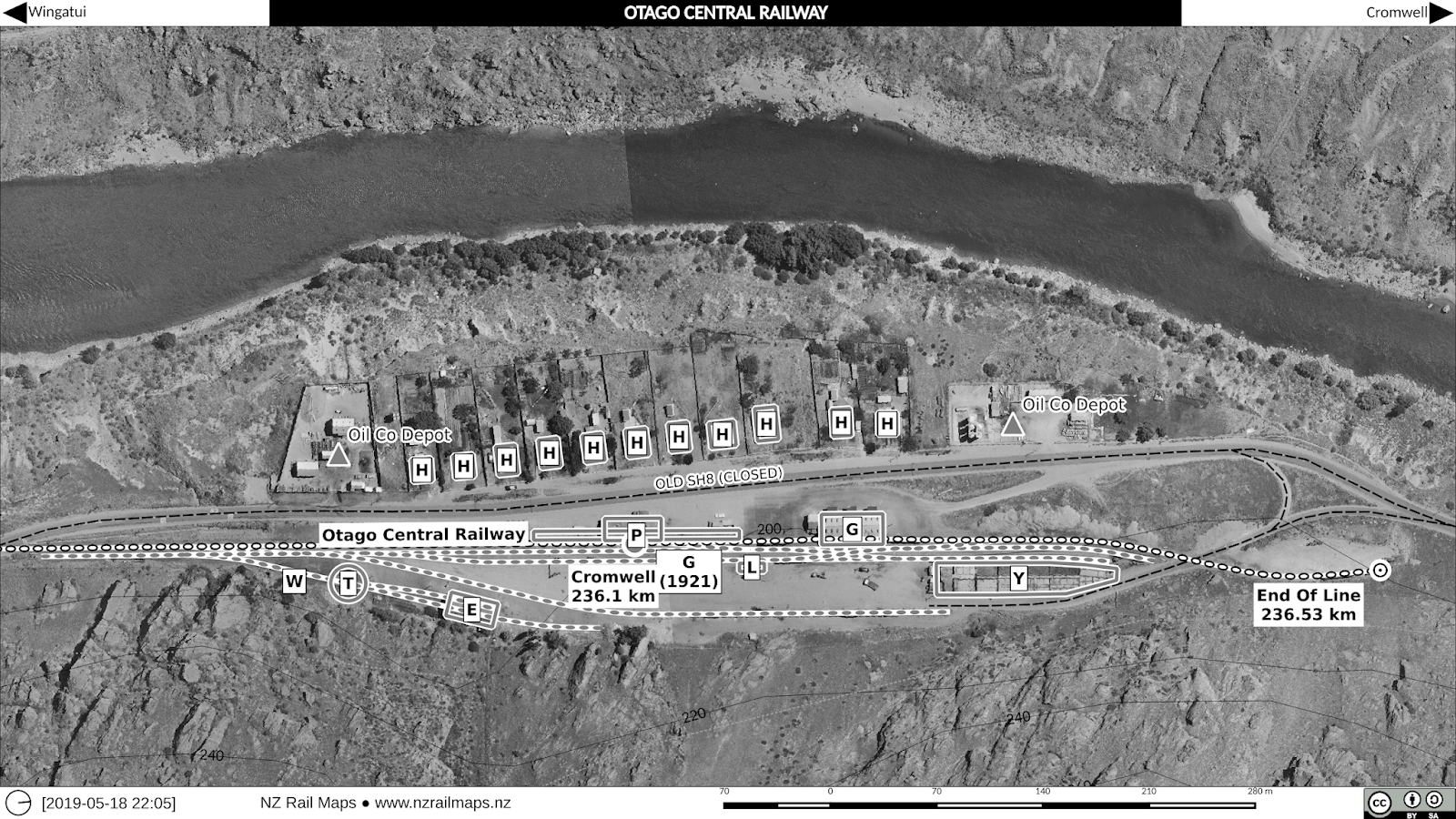Last time we wrote about the Cromwell Gorge section that we have been remapping. We chose to redo the aerial mosaics down this section from scratch for various reasons, but a part of that has been the discovery that the original placement of the historical photos in some places was most probably incorrect in that the alignment for the old railway was too far into the present hydro lake.
For various reasons it is extremely difficult to overlay historical aerial photos in steeply graded terrain like this gorge which has steep sides and that is primarily because of perspective distortion with terrain which is not directly below the camera lens and that is a key reason why the process called orthorectification is used by Linz and others to get aerial photos that are geometrically corrected for using in map work. We don't have that option with the old maps, so the placement is a lot of guesswork. But we have found some historical aerial photos taken between 1980 and 1992 through the Gorge and they are confirming some errors in some of the original aerial layers that were produced. A part of the issue would be with the lower resolution base layers that were used at the beginning.
Right now we are just checking with aerial photos from the late 1980s through the area to confirm the alignment and make a few readjustments where necessary to ensure the result is as good as it possibly can be. This will mean a couple more days work before having something to redo the mapping with. We did get a 1991 survey scanned for evaluation back in 2017 but didn't draw too many conclusions from it. But having reasonably good coverage of a few areas helps a lot.
Ultimately the only real way would be to have access to original survey plans or drawings that plotted the new highway route in the Gorge compared with the existing route. Maybe these exist in Archives somewhere. The issue for our maps isn't that a particular aerial photo is uncertain as to its longitudinal placement along a particular part of the Cromwell Gorge; it is mainly the question of how to align things across the width of the Gorge with limited referential viewpoints and various distortions.
We had hoped to progress this work further this week but various time commitments have prevented that. We have also been working on maps of Christchurch City this week.
We had hoped to progress this work further this week but various time commitments have prevented that. We have also been working on maps of Christchurch City this week.








